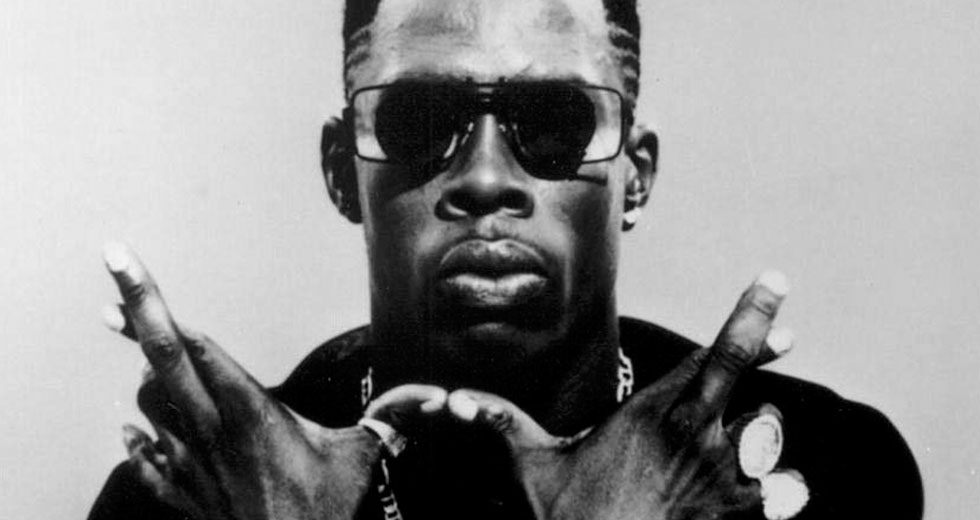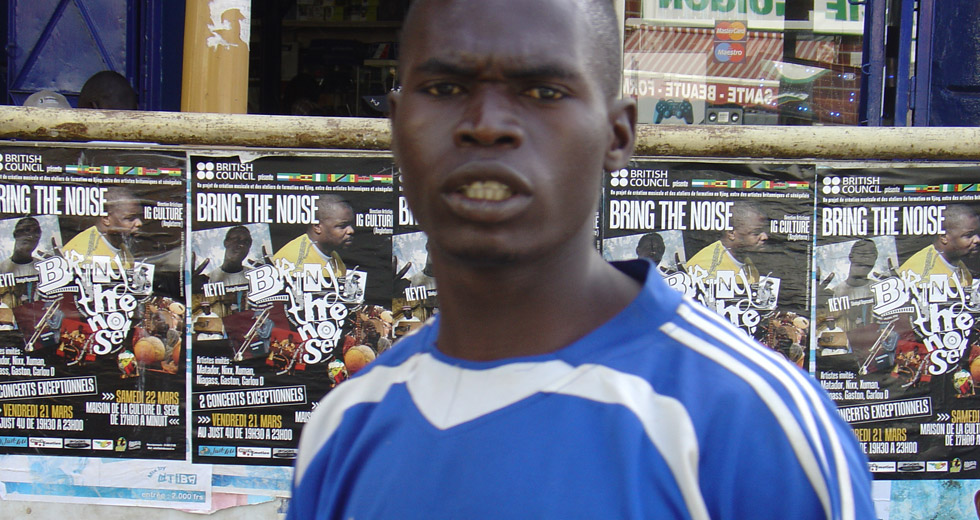Warrior Charge: The Birth of UK Soundsystem Culture
Since taking root in the UK in the ’50s, soundsystem culture has massively impacted British musical history. Beginning as a focal point for the first Caribbean communities, soundsystems became a powerful force in the encounter between black Britain and racism. But the history of soundsystems is also a story of joy. They have turned the nation of the stiff upper lip and starched collar into a land of ravers, making London one of the most vibrant music capitals of the world. Let’s rewind.
Duke Vin and Count Suckle arrived in England in 1954, stowaways on a boat from Kingston. They had both been soundmen (DJs) in Jamaica, where soundsystems had evolved from a means for bars and shops to attract customers into big, competitive parties known as dancehalls, despite being staged outdoors. Vin built a soundsystem that he called Tickler in 1955, Suckle’s followed shortly after. They held residencies and vied for crowd loyalty in Ladbroke Grove, then a hinterland for the law. But ska, the sped-up Jamaican adaptation of jazz and R&B that they played, was upbeat and optimistic. Count Suckle later founded the Roaring Twenties, a legendary club in Carnaby Street that attracted tourists and celebrities alongside Suckle’s regular following.
Although soundsystems were primarily Jamaican, other Caribbean immigrants in London were drawn to the lifestyle. Dennis Bovell, a Barbadian who moved to London in 1965, aged 12, had a hand in many of the most important shifts in British reggae. “Immediately I landed in the soundsystem culture because my dad had an amplifier and a couple of boxes, and in them days that was a soundsystem. If you had a 50-watt amp and four or five speakers, enough to put one in every room of a party and enough wire to run it, that was a soundsystem. My dad was a bus driver and knew lots of busmen, my mum was a nurse and knew lots of nurses. So busmen and nurses came from all over.”
Bovell’s father would take his system, called Tropical Soundmaster, to play at “blues parties” at his own or friends’ houses, as well as weddings and christenings, sometimes playing for free, “for some beer or some weed.” He’d get records sent by mail order from Jamaica and the USA, ensuring a good following because “he was known to have a great record collection.”
Back then, the only way you could hear reggae was on a soundsystem.
Bovell can reel off a long list of the other soundsystems around. In southwest London there was Count Benji – “a great soundsystem he was” – one of what Bovell calls the “big four” of the late ’60s along with Duke Reid, Sir Coxsone (London soundsystems regularly nicked the names of their famous Jamaican counterparts) and Neville the Enchanter. In the north, there was Count Shelley and Fatman, to the west, Duke Vin, whose system was less mighty than most. Bovell recalls, “I’ve heard him say it wasn’t even a soundsystem really, it was a radiogram! Nowadays you’d be laughed off the scene with that. But in those days a ten-watt amplifier was a big deal! And then it grew and grew and grew until my generation had soundsystems like King Tubby’s.” It wasn’t confined to London – big systems sprang up in Manchester, Birmingham, Bristol and Huddersfield. They spurred the growth of what was a then-new subsection of the record industry. “Back then, the only way you could hear reggae was on a soundsystem,” Bovell remembers.
Entrepreneurs took advantage of the demand they created, importing records played in the soundsystem, then selling them on people’s doorsteps. Later, labels emerged first for Jamaican, then UK artists’ music. Early owners included Chris Blackwell, the founder of Island, and Lee Gopthal, who ran Trojan, which dominated the British market in the late ’60s and early ’70s.
Music became a focal point of the social whirl. The record shops were listening centres and meeting places. Attached to every system was a crew arranged in a hierarchy, from system owner to selector (who selected the discs), deejay (the man on the mic), down to the box carriers, who moved the system from show to show. To be credible, a reggae group had to be attached to a soundsystem. At shows, systems had primacy over groups, not vice versa. “I used soundsystems to broaden appreciation of my music,” says Bovell, who played in the band Matumbi. Joining a system called Sufferah’s Hi-Fi, they’d play and play Matumbi songs until people knew the songs and wanted to own them.
Matumbi were at the helm of a second generation of UK soundsystems, one more independent from their Jamaican forebears. The name Sufferah was one manifestation: people were shocked that they hadn’t given it a traditional Jamaican soundsystem name. More UK names popped up, like Lord David, Mombasa and, eventually, Jah Shaka, who, says Bovell, is “still to this day the monarch.”
As reggae music and the sheer number of systems increased in the ’70s, there was growing demand for new music. Despite a lingering prejudice in favour of Jamaican tracks, soundmen began looking to homegrown sources. Still, Bovell tricked a lot of them into buying Matumbi’s pre-releases, making them look like they were pressed abroad. “We were accused of not being able to play reggae like Jamaicans, so I set out to disprove that. I made a set of records in this country without putting on any information about who was on the recording. And when I made my 7-inch pressings, I dinked them!”
Dinking is the practice of cutting a big hole in the centre of a 7-inch record, like the Jamaican editions, which was how people differentiated between imports and those pressed in England. Selectors failed to spot the difference, forcing them to acknowledge that British reggae could be as good as its Jamaican parent.
Your chest vibrated and your trouser leg too – we shook the place apart!
Sufferah’s soundsystem was comprised of four 600-watt amplifiers and 40 18-inch speakers, the ultimate goal being not volume but quality of vibration. They had a residency at the Metro club on the corner of Tavistock Road in Ladbroke Grove, where they staged their first soundclash with Shaka on New Year’s Eve, 1975. “Your chest vibrated and your trouser leg too – we shook the place apart!” says Bovell.“I mean, the building is no longer there, the structural engineers said it had shifted its base. I had a residency there every Friday night, so it was probably mostly me!”
Sufferah’s were also at Metro in the early days of the Notting Hill Carnival. “I watched that thing grow from 60 people at most to what it is now,” says Bovell. Founded in 1959 by a Trinidadian, Claudia Jones, in response to racial attacks the previous year, Carnival now attracts some two million revellers and tourists every August bank holiday weekend. Jones was an active communist who established The West Indian Gazette newspaper for London’s Caribbean communities. It ran local and global stories, supported black businesses, campaigned on issues like apartheid and discussed the growing influence of Rastafari in Jamaica. For its pains, the Gazette saw its office attacked and smeared with feces.
In the ’70s, police in London revived the 1824 Vagrancy Act. The ‘sus’ (‘suspicion’) laws, as they became known, meant anyone could be arrested merely for looking like they were about to commit a crime. These new powers became synonymous with a targeting of black and other minority communities. Paul Gilroy, the academic theorist behind the book The Black Atlantic, notes that “the police were trying to control where people could be in a city. The laws were applied in a very uneven and discretionary way to criminalise a generation, to confine them to some areas of the city and exclude them from others.”
The militant mood found its reflection in the music. Junior Byles’ “Beat Down Babylon” was just one of a series of strident reggae songs, including Culture’s “Two Sevens Clash” and Max Romeo’s “War Ina Babylon” that formed what Gilroy calls “the golden age of militant reggae,” which climaxed in 1976 when riots erupted at the Notting Hill Carnival. Gilroy recalls a summer of tension leading up to the riots, fuelled by blazing heat, anti-apartheid riots in Soweto and the West Indies cricket team’s “boisterous” defeat of England. He describes a new tension in the environment at Carnival, with soundsystems dominating over more traditional carnival acts, like tin pan bands.
In 1976, Bovell was released from prison following a lengthy legal battle stemming from a fight in a club. That year, he drove to Carnival in a white Jaguar with the Jamaican deejay I-Roy and was hit by a hail of bottles. Instantly, he turned the car around and drove away, determined to avoid any repeat. Babylon, a film loosely based on Bovell’s experience, was released in 1981 and sums up many of the recurring themes of soundsystem culture. Centring on Blue, played by Aswad’s Brinsley Forde, it climaxed at a Jah Shaka soundclash, with Blue singing “Can’t Take No More a Dat” over the instrumental of Aswad’s “Warrior Charge.” With its brash horns and steppa rhythms, the track found acclaim in Jamaica, one of the first UK reggae tunes to do so. Within a few years, this became, if not the norm, then a lot less of a rarity.
Around this same time, another crew, Saxon Sound, were also on the up. Their frontman, Tippa Irie was, like Bovell before him, the son of a soundman. Catching the attention of Ned Francis and Dennis Rowe, he was asked to join their soundsystem, Saxon, extending a roster that already included Peter King, Smiley Culture, Maxi Priest and Papa Levi. In 1984, Levi’s “Mi God Mi King” went to number one in the Jamaican charts, the first British reggae record to do so. Its “fast chat” style was taken up both in Jamaica and in the UK, where it became dominant. British reggae was growing fast: Smiley Culture had two UK hits that year, including the Jamaican/ London slang glossary “Cockney Translation.”
Tippa explains the emergence of fast chat: “I think it was a dance in Brockley, and Peter King started to chat – he sped it up, the place went mad. Everybody said, ‘That’s new, that’s fresh.’ The DJs from Jamaica were more laidback, we decided this could be our style.”
Saxon were massive in the ’80s. Tippa says: “We turned it around so that people in the Caribbean started to follow what was happening here. That had never been done before. It was a special time to see a lot of the famous artists from Jamaica chatting our lyrics. I’d go to shows like Reggae Sunsplash and see Yellowman actually singing our songs. That was a thrill.”
In the ’80s, many young artists came up influenced by the likes of Bovell, Shaka and Saxon. Finally, a generation after they began, British systems were forging their own styles.

